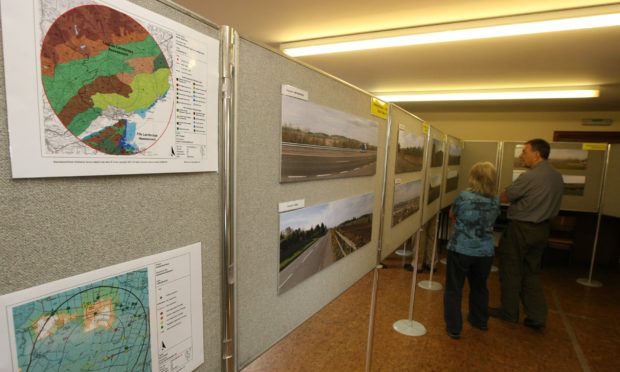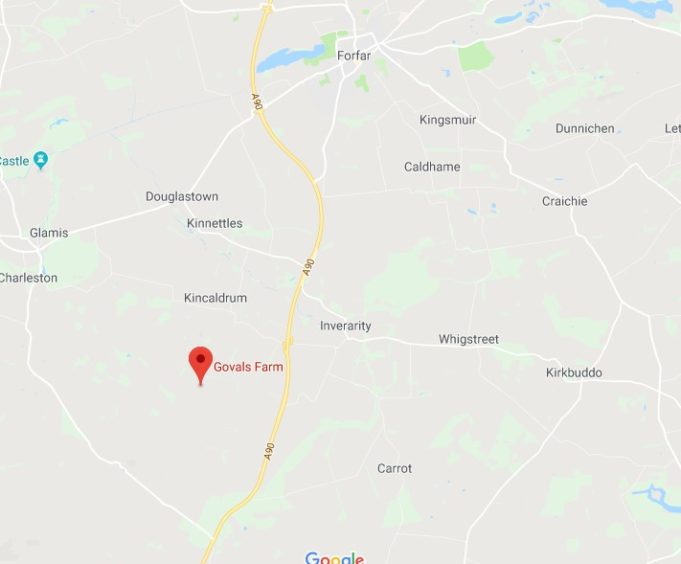Action to tackle Scotland’s climate emergency could see the return of a controversial Tayside windfarm plan.
Backers of the fiercely-opposed development at Govals Farm, close to the A90, have said they still consider the site “in most regards, ideal.”
The Scottish Parliament passed a bill earlier this week committing to a carbon emissions cut to net-zero by 2045.
Farmer David Cooper and his agent Green Cat Renewables sparked a furious row in 2013 when they overturned an earlier Angus Council decision to refuse permission for the “industrial size” windfarm through an appeal to the Scottish Government.
Local people and campaigners thought the scheme was dead after the developers were unable to agree an essential plan with the Ministry of Defence to protect radar at RAF Leuchars in Fife.
Although the permission for the development expires next month, and no solution to the radar issue has yet been found, a spokesman for Green Cat Renewables said they had not given up.
He said: “We believe the site at Govals is in most regards an ideal wind farm site. It has not been possible to build out the project at this point due to not being able to agree technical mitigation to the potential impact on the RAF’s radar at Leuchars.
“The current consent runs out shortly but we do not rule out applying for a new consent in the future if technical advances in radar mitigation make this possible or if the MoD’s position in safeguarding Leuchars changes.
“Climate change is not going to go away and the need for action is greater than ever.”
Onshore wind has become less commercially attractive after the UK Government ended its subsidy scheme in favour of less-established renewable technologies.
Scotland’s first subsidy-free onshore windfarm should be operational by 2020 and a recent report from industry group RenewableUK warned more onshore wind is needed to meet the new carbon reduction targets.
Mr Cooper has submitted a separate application for a range of sustainable energy sources on his farm.
Anti-windfarm campaigners had interpreted the application for solar panels, a ground source heat pump and a biomass boiler as tacit acknowledgement the windfarm plan had been abandoned – a claim denied by Mr Cooper’s agent.
One campaigner, who contested the original windfarm, said: “I am certain residents will warmly welcome Mr Cooper’s new renewable energy plans which will service his farm.
“The proposal for an industrial size wind farm was a ghastly mistake not supported by the community. It would undoubtedly have blighted the landscape.”











